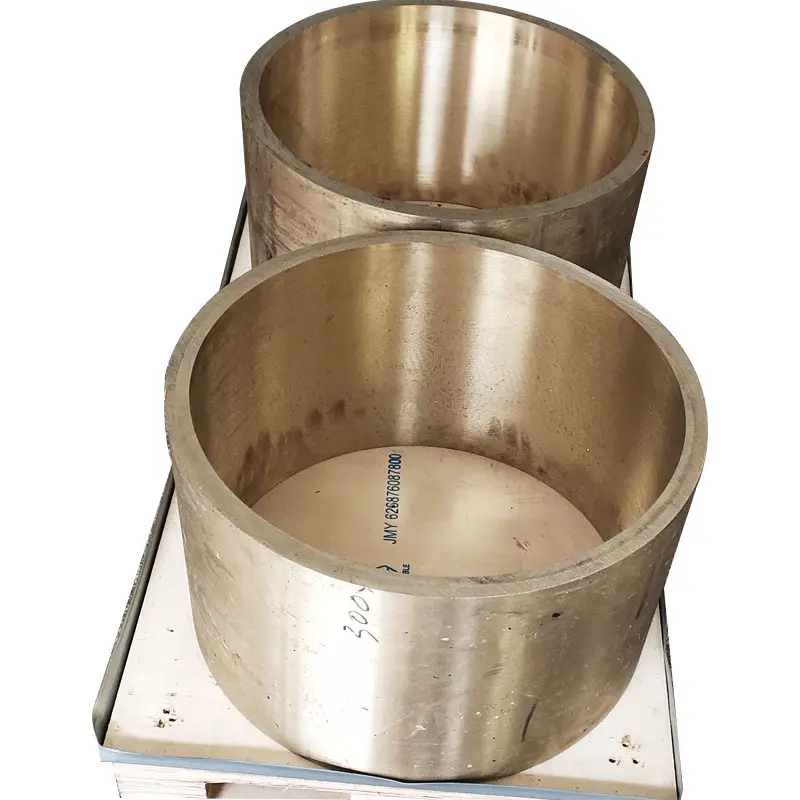
In the shipbuilding industry, choosing the right material for propeller manufacturing is crucial for ensuring optimal performance, durability, and efficiency. Among the various materials available, aluminum bronze has emerged as a popular choice due to its excellent combination of strength, corrosion resistance, and machinability. However, not all aluminum bronze grades are created equal when it comes to propeller manufacturing. This article aims to explore the different grades of aluminum bronze and determine which is best suited for marine propellers.
Understanding Aluminum Bronze
Aluminum bronze is a family of copper-based alloys that contain aluminum as the primary alloying element, often with additional elements such as iron, nickel, and manganese. These alloys are known for their high strength, excellent corrosion resistance (especially in seawater), and good wear resistance.
Key Properties for Propeller Manufacturing
When selecting an aluminum bronze grade for propeller manufacturing, several key properties must be considered:
- Strength
- Corrosion resistance
- Wear resistance
- Castability
- Machinability
- Fatigue resistance
- Cavitation resistance
Common Aluminum Bronze Grades for Marine Propellers
The most commonly used aluminum bronze grades for marine propellers are:
Let’s compare these grades based on their chemical composition and mechanical properties.
Chemical Composition
The following table shows the typical chemical composition of these aluminum bronze grades:
| Grade | Cu (%) | Al (%) | Fe (%) | Ni (%) | Mn (%) | Other (%) |
|---|---|---|---|---|---|---|
| C95200 | 88-92 | 8-9.5 | 2.5-4 | – | 1 max | 0.5 max |
| C95300 | 86-90 | 9-11 | 2.5-4 | – | 1 max | 0.5 max |
| C95400 | 83-87 | 10-11.5 | 3-5 | 1.5 max | 1 max | 0.5 max |
| C95500 | 78-82 | 10-11.5 | 3-5 | 3-5.5 | 3.5 max | 0.5 max |
| C95800 | 79-82 | 8.5-9.5 | 3.5-4.5 | 4-5 | 0.8-1.5 | 0.5 max |
Mechanical Properties
The mechanical properties of these grades are crucial for determining their suitability for propeller manufacturing:
| Grade | Tensile Strength (MPa) | Yield Strength (MPa) | Elongation (%) | Brinell Hardness |
|---|---|---|---|---|
| C95200 | 585 | 275 | 20 | 150 |
| C95300 | 620 | 285 | 18 | 160 |
| C95400 | 690 | 345 | 12 | 190 |
| C95500 | 760 | 380 | 10 | 210 |
| C95800 | 690 | 275 | 15 | 170 |
Evaluating Grades for Propeller Manufacturing
Now, let’s evaluate each grade based on the key properties required for propeller manufacturing:
1. C95200 (AB1)
- Strength: Moderate
- Corrosion resistance: Good
- Wear resistance: Moderate
- Castability: Excellent
- Machinability: Very good
- Fatigue resistance: Good
- Cavitation resistance: Moderate
C95200 is often used for small to medium-sized propellers due to its excellent castability and good machinability. However, its moderate strength and wear resistance may limit its use in larger or high-performance applications.
2. C95300 (AB2)
- Strength: Good
- Corrosion resistance: Very good
- Wear resistance: Good
- Castability: Very good
- Machinability: Good
- Fatigue resistance: Good
- Cavitation resistance: Good
C95300 offers a good balance of properties, making it suitable for a wide range of propeller sizes. Its improved strength and wear resistance compared to C95200 make it a popular choice for many marine applications.
3. C95400 (AB3)
- Strength: Very good
- Corrosion resistance: Excellent
- Wear resistance: Very good
- Castability: Good
- Machinability: Good
- Fatigue resistance: Very good
- Cavitation resistance: Very good
C95400 is widely used for large marine propellers due to its excellent combination of strength, corrosion resistance, and wear resistance. Its improved mechanical properties make it suitable for high-performance applications.
4. C95500 (AB4)
- Strength: Excellent
- Corrosion resistance: Excellent
- Wear resistance: Excellent
- Castability: Good
- Machinability: Moderate
- Fatigue resistance: Excellent
- Cavitation resistance: Excellent
C95500 offers the highest strength and wear resistance among these grades, making it ideal for large, high-performance propellers. However, its reduced machinability may increase manufacturing costs.
5. C95800 (AB5)
- Strength: Very good
- Corrosion resistance: Excellent
- Wear resistance: Very good
- Castability: Very good
- Machinability: Good
- Fatigue resistance: Excellent
- Cavitation resistance: Excellent
C95800 is considered the premium grade for marine propellers due to its excellent balance of properties. It offers superior corrosion resistance, good castability, and excellent fatigue and cavitation resistance.
Selecting the Best Grade for Propeller Manufacturing
The choice of the best aluminum bronze grade for propeller manufacturing depends on various factors, including:
- Propeller size
- Vessel type and performance requirements
- Operating conditions (e.g., seawater temperature, salinity)
- Manufacturing capabilities
- Cost considerations
To help with the selection process, consider the following guidelines:
| Propeller Size | Vessel Type | Recommended Grade |
|---|---|---|
| Small | Pleasure boats, yachts | C95200, C95300 |
| Medium | Fishing boats, tugboats | C95300, C95400 |
| Large | Cargo ships, tankers | C95400, C95500 |
| Very Large | Container ships, cruise | C95500, C95800 |
Conclusion
While all the discussed aluminum bronze grades offer excellent properties for marine propeller manufacturing, C95800 (AB5) stands out as the best overall choice for most applications. Its superior combination of strength, corrosion resistance, castability, and fatigue resistance makes it ideal for a wide range of propeller sizes and vessel types.
However, the final selection should always be based on specific project requirements and constraints. For smaller propellers or less demanding applications, C95300 or C95400 may offer a more cost-effective solution. In contrast, for very large or high-performance propellers, C95500 might be the best choice despite its higher cost and reduced machinability.
When selecting an aluminum bronze grade for propeller manufacturing, it’s crucial to consult with materials experts and propeller designers to ensure the chosen grade meets all performance, durability, and manufacturing requirements. By carefully considering the properties of each grade and matching them to the specific needs of the project, manufacturers can ensure optimal propeller performance and longevity in marine environments.
